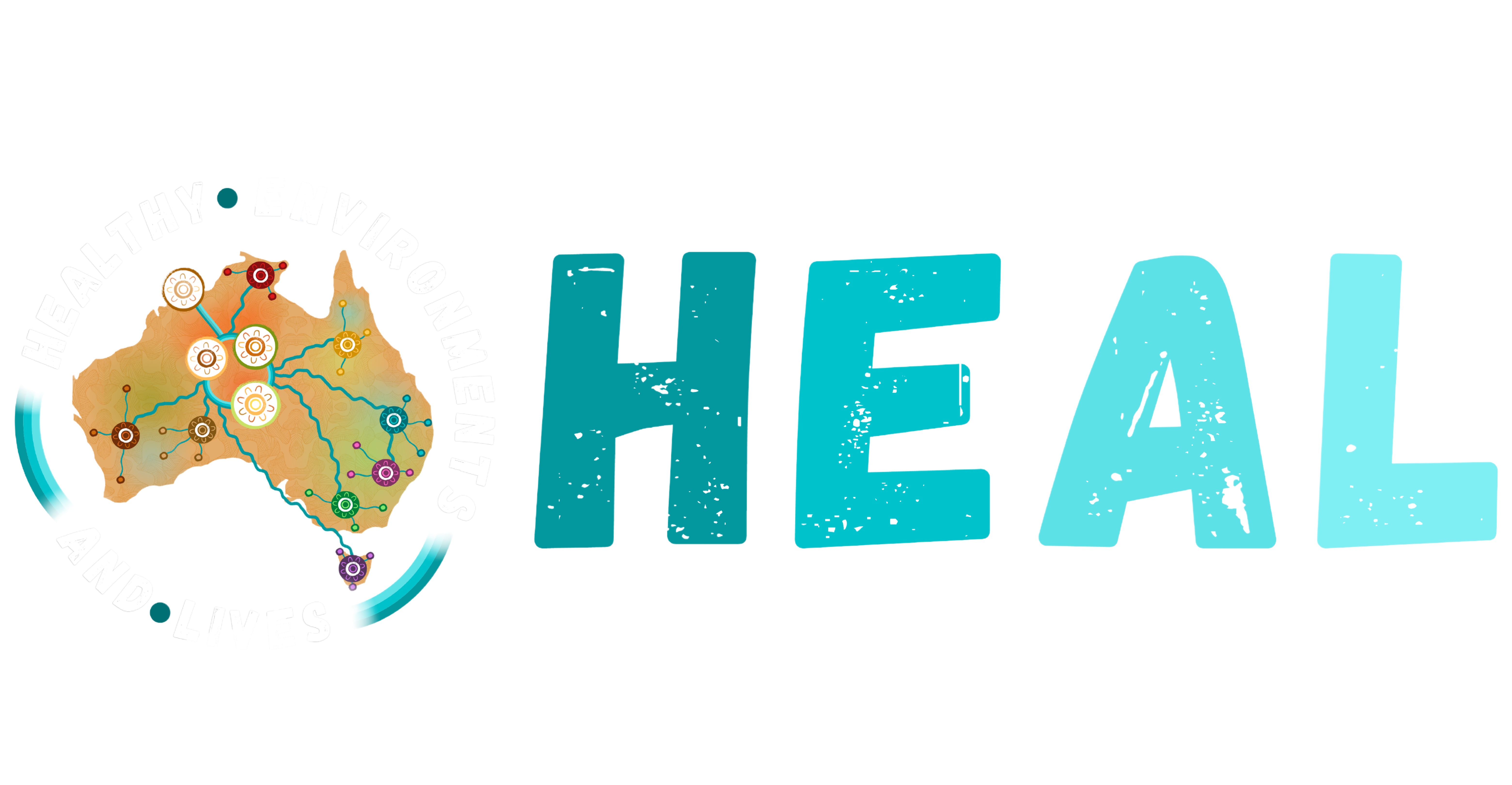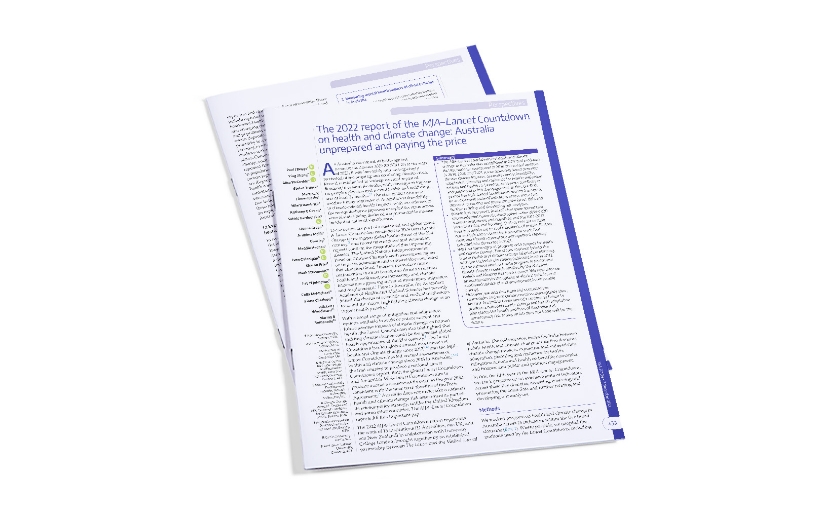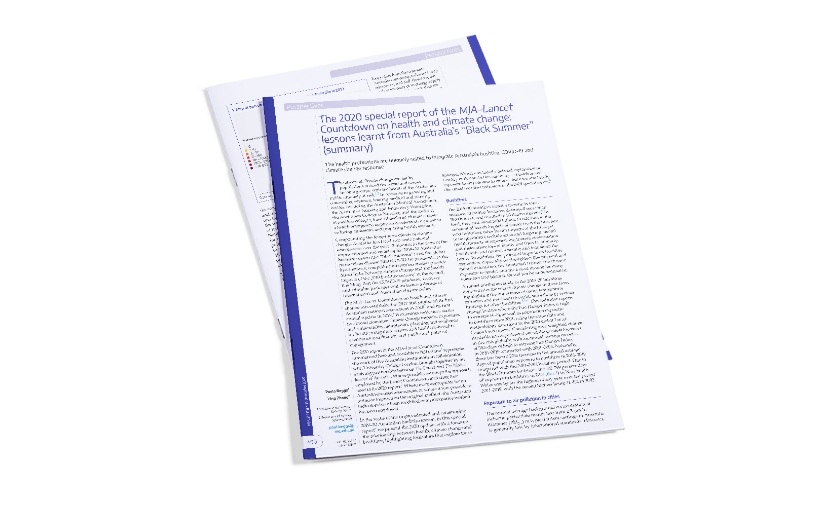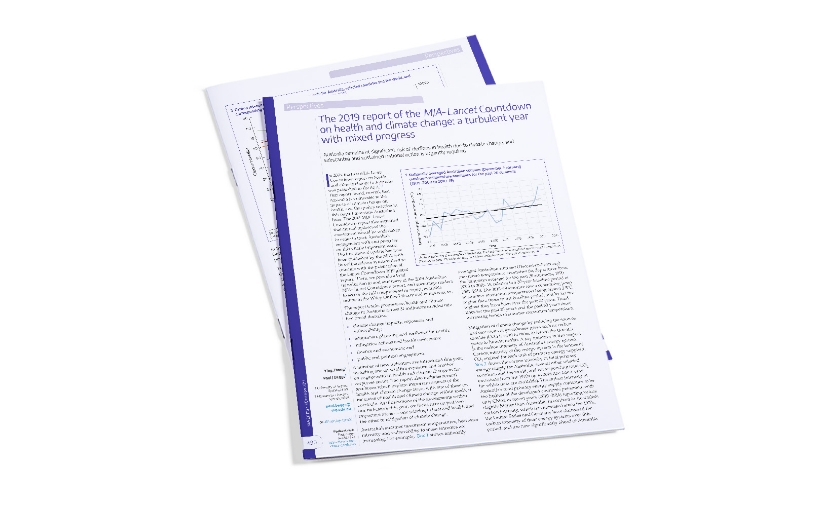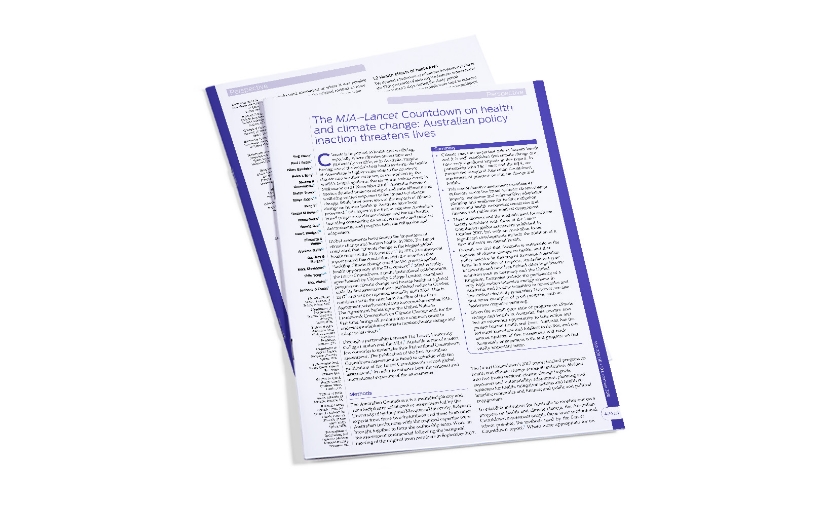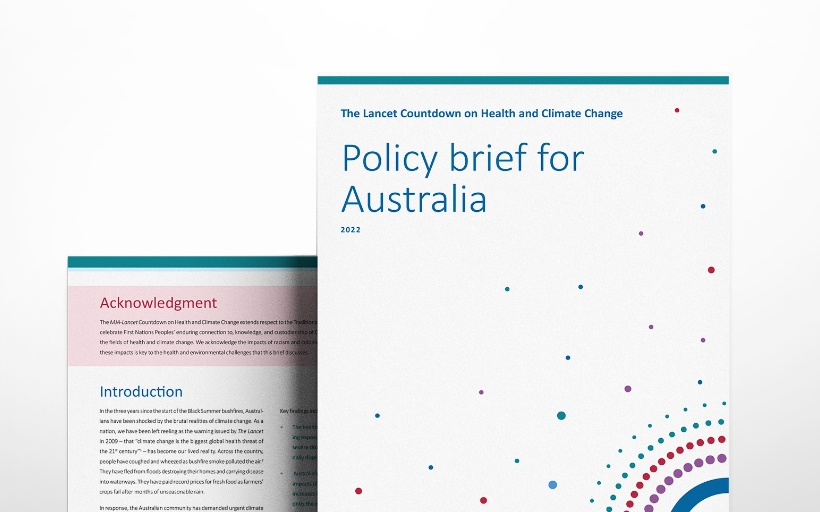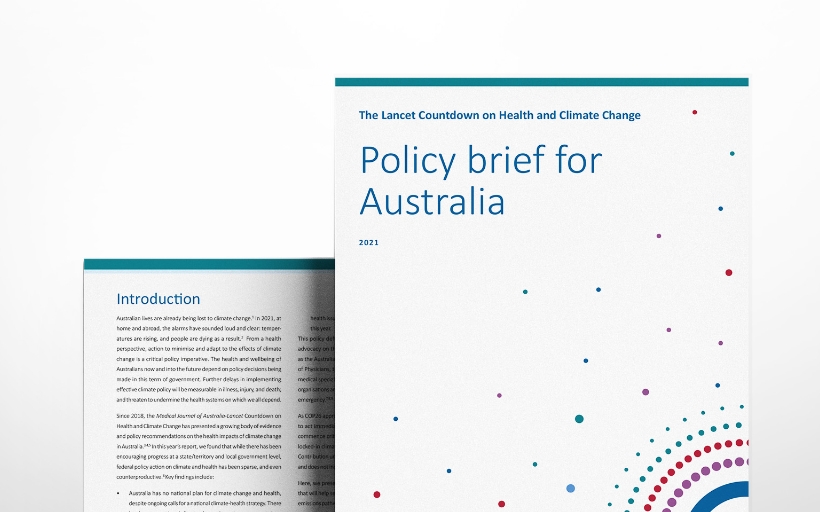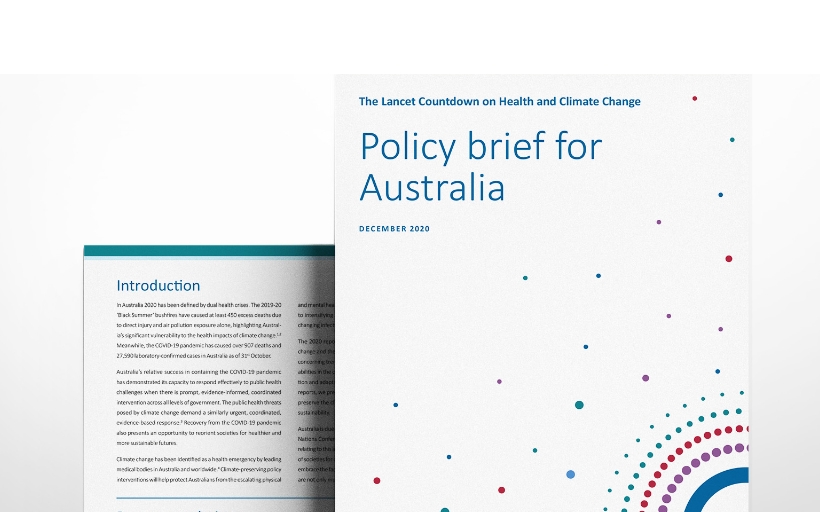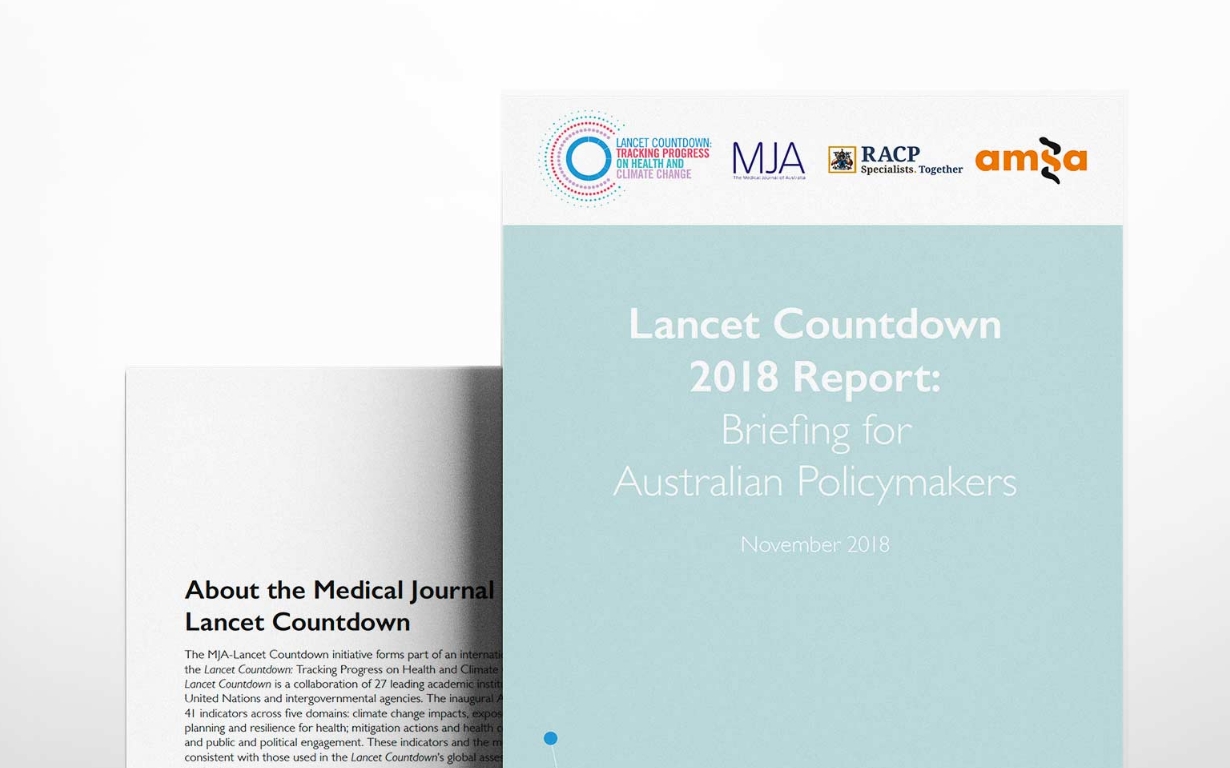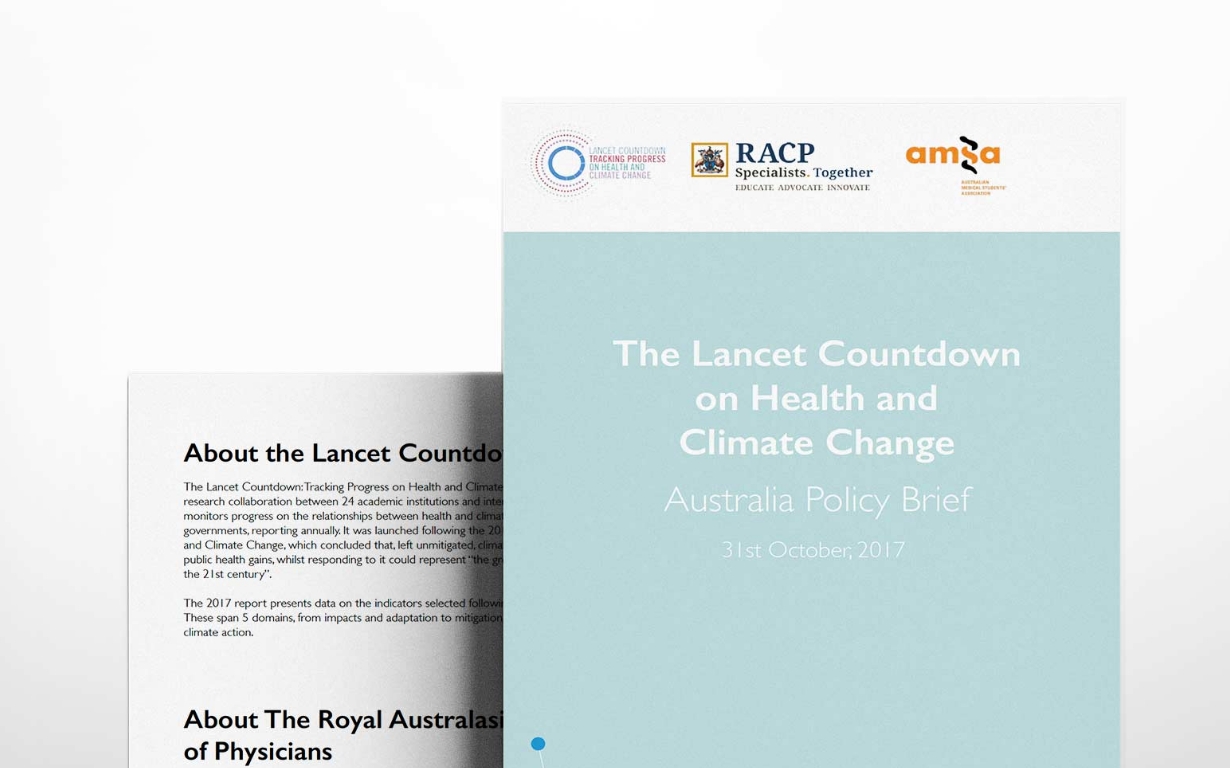Indicators
The MJA–Lancet countdown on health and climate change in Australia
The MJA–Lancet Countdown on health and climate change in Australia was established in 2017 and has produced five annual national assessments. It examines five broad domains: climate change impacts, exposures and vulnerability; adaptation, planning and resilience for health; mitigation actions and health co‐benefits; economics and finance; and public and political engagement. The MJA–Lancet Countdown tracks progress on an extensive suite of indicators across these five domains, accessing and presenting the latest data and analyses. Each year, an accompanying policy brief is also published by the team in collaboration with various stakeholder organisations.
Australian health performance framework
The AIHW’s Australian Health Performance Framework (AHPF) is a tool for reporting on the health of Australians, the performance of health care in Australia and the Australian health system. The indicators within the framework are grouped into determinants of health, health system and health status indicators. They can be disaggregated and analysed through selected population groups, providing a rich source of information at the National, State and Territory and local levels.
To find out more, visit AIHW – Australia’s Health Performance Framework
Environmental health indicators for selected environmental hazards in New South Wales
This project on Environmental Health (EH) indicators was commissioned to develop a system for tracking health impacts from environmental risk factors for communities in New South Wales (NSW), Australia, to prioritise key areas of concern, and where possible to estimate the burden of diseases attributable to different exposures. EH indicators link exposures to biophysical, built, social and aesthetic environments to health effects.
To find out more, visit NSW Environmental Health Indicators
